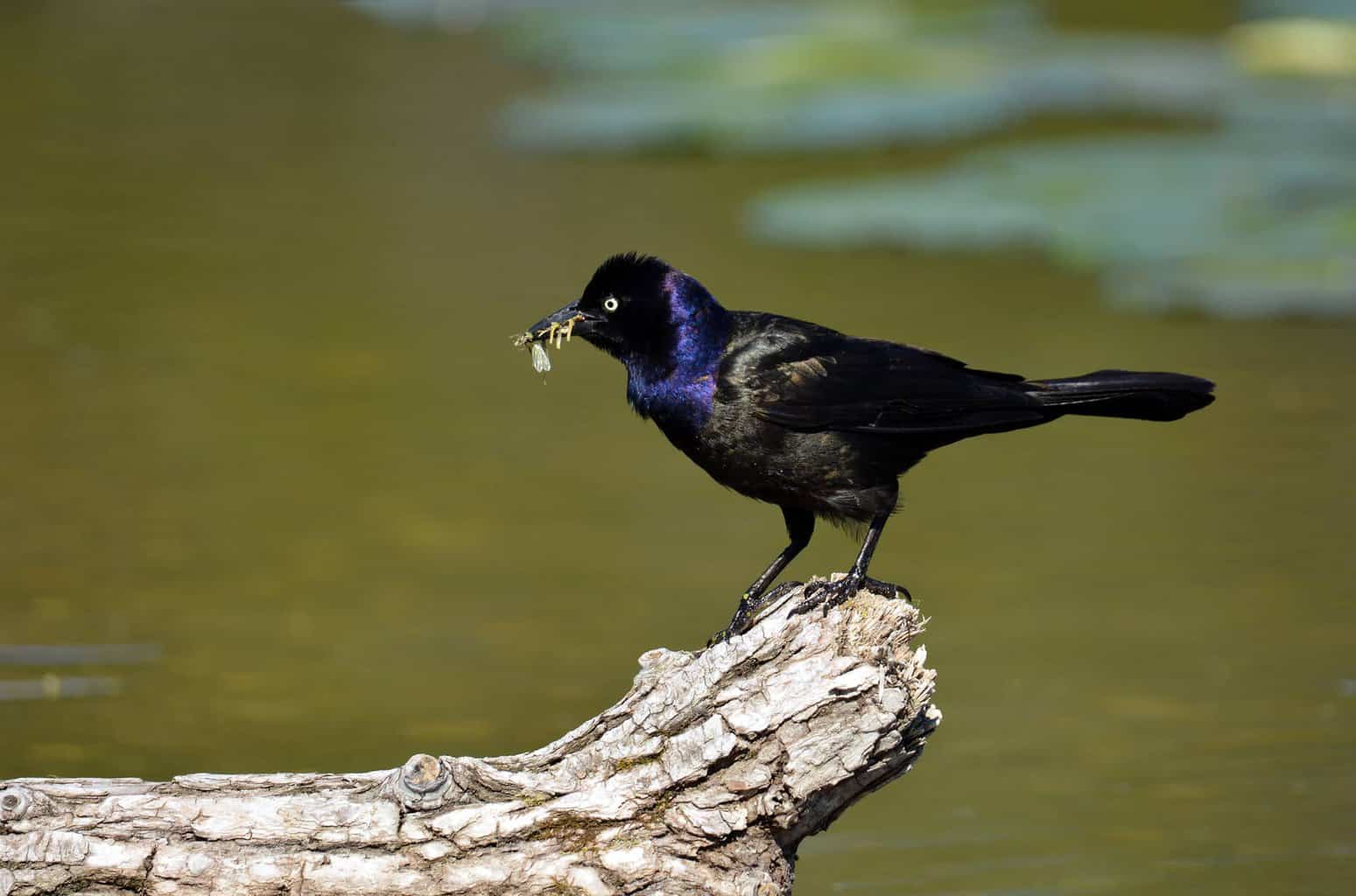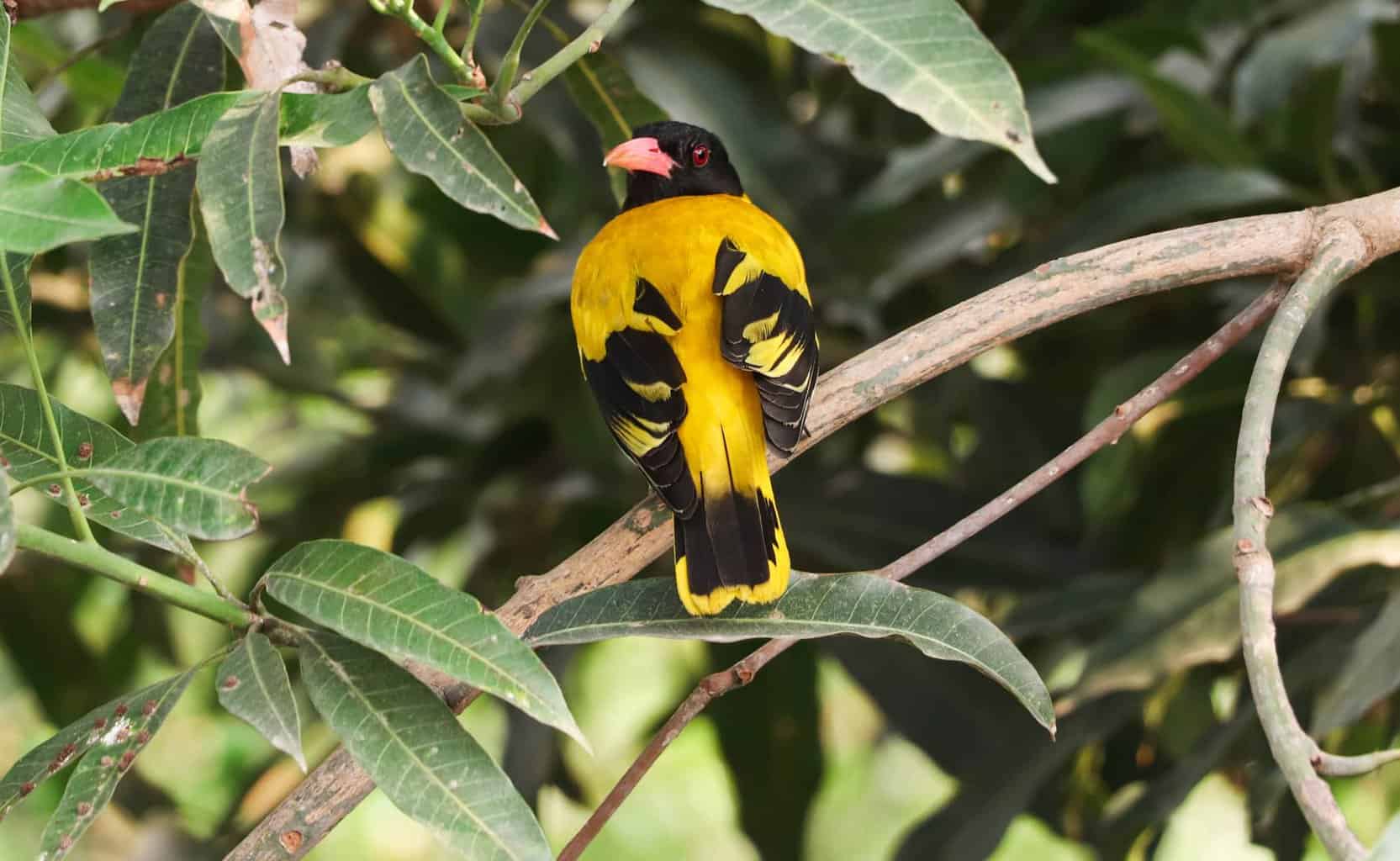Some people love blackbirds, thanks to their lively personalities. Others are more critical, viewing these birds with dark wings as a nuisance.
Idaho’s birdwatchers likely grew up spotting red-winged blackbirds with their red and orange wing patches. Or perhaps they enjoy spotting colorful orioles or huge flocks of starlings.
Of course, huge groups of birds can be a problem, especially if they are frightening away the songbirds that many Idahoers want to attract to their yards and feeders.
Importantly, not all blackbirds are actually blackbirds. Additionally, not all blackbirds are aggressive.
If you can spot the different varieties, you can make an informed decision about whether you should leave them alone, work to attract them, or take action to repel them from your property.
Spotting blackbirds in Idaho ranges from easy to challenging, as some species are very common and others are incredibly rare.
We’ve put together a list of the 10 species of Icterids—the family all blackbirds belong to—you’re likely to see here in Idaho.
10 Blackbirds You Can Find in Idaho
Red-winged Blackbird

- Scientific Name: Agelaius phoeniceus
- Length: 22 – 24 cm (8.7 – 9.4 in)
- Weight: 64 g (2.3 oz)
- Wingspan: 31 – 40 cm (12 – 16 in)
Color pattern: Male red-winged blackbirds are some of the most recognizable birds in Idaho! They have red and orange patches at the tops of their wings.
Female red-winged blackbirds look like big, brown, and cream-colored sparrows. They also have a dark brown stripe that runs from behind their eyes to the backs of their heads.
In the breeding season of summer, red-winged blackbirds roost in deciduous trees, sometimes in the thousands. They may take over shady trees in yards, neighborhoods, and parks.
Red-winged blackbirds are prone to defending their nests with quite a bit of aggression. You may spot them chasing away birds much larger than they are, or even flying at the heads of people who just happen to walk through their territory.
They aren’t aggressive birds 100% of the time, though. Red-winged blackbirds spend much of the year living alongside other icterids, including grackles and cowbirds.
European Starling

- Scientific Name: Sturnus vulgaris
- Length: 19 – 23 cm (7.5 – 9.1 in)
- Weight: 58 – 101 g (2.0 – 3.6 oz)
- Wingspan: 31 – 44 cm (12 – 17 in)
Color patterns: Whether dark brown or with black bodies, European starlings have iridescent feathers, mottled with beige spots. Males and females look quite similar to one another, which is uncommon in most icterids.
A single European starling is not much of a problem, nor is a small group of them. In fact, they can be a pleasant sight at a birdfeeder. But all of that changes when they gather in the hundreds or even thousands. That is when they tend to be viewed as nuisance birds.
Unlike most birds in the US, European starlings are unprotected by the Migratory Bird Treaty Act. They were first introduced into North America in 1890, and now they can be found in all 50 states.
European starlings live in large groups for most of the year, although they live independently during the breeding season, as they raise their hatchlings. Tenacious, they adapt easily to their surroundings and often out-compete any other birds in the area.
Unfortunately, European starlings are aggressive birds and a threat to native songbirds, and this leads many Idaho residents to try to get rid of them.
Brown-Headed Cowbird

- Scientific Name: Molothrus ater
- Length: 16 – 22 cm (6.3 – 8.7 in)
- Weight: 30 – 60 g (1.1 – 2.1 oz)
- Wingspan: 36 cm (14 in)
Color patterns: Brown-headed cowbirds are smaller than most other icterids. Their brown heads are finch-shaped, and they range from dullish-grey (females) to iridescent black base (males).
Talk about a clever bird! You may have heard about the adaptability of brown-headed cowbirds, who have developed a unique trait called brood parasitism.
Instead of raising their own young, brown-headed cowbirds lay their eggs in the nests of other birds. The other birds don’t even recognize the different eggs, even if they are a different size, and even if the hatchlings look completely different!
This adaptation has led to brown-headed cowbirds not even needing to build their own nests. Over their breeding season, they will lay about 40 eggs in a single season. Around 3% will make it to adulthood.
Brewer’s Blackbird

- Scientific Name: Euphagus cyanocephalus
- Length: 20 to 25 cm (8 – 10.3 in)
- Weight: 63 g (2.2 oz)
- Wingspan: 39 cm (15.5 in)
Color patterns: Like many other icterids, male Brewer’s Blackbirds have iridescent feathers. Depending on the lighting, a male Brewer’s blackbird head can look bright blue or blueish-purple.
Their bodies are greenish, and their bills and legs are black. Females are similar in color but duller. Their wings and tails are darker than the rest of the body.
Brewer’s blackbirds are resourceful. They adapt well to the urban environments where they are often found, as well as marshes, swamps, and wetlands.
Their song is a short, creaky-sounding “ke-see.” Because they are very social birds, you will often hear them communicating with one another.
Yellow-Headed Blackbird

- Scientific Name: Xanthocephalus xanthocephalus
- Length: 21 to 26 cm (8.3 – 10.2 in)
- Weight: 44 – 100 g (1.6 – 3.5 oz)
- Wingspan: 42 – 44 cm (16.5 – 17.3 in)
Color patterns: Female yellow-headed blackbirds have a light yellow head. Male heads are much brighter. They are stout in shape, with long tails and sharp bills.
Yellow-headed blackbirds have a fun scientific name “Xanthocephalus xanthocephalus.” The name comes from the combination of two Greek words: xanthous for yellow and cephalus for the head. That flashy yellow head is much larger than most other blackbirds.
The Audubon Society refers to the grating song of the yellow-headed blackbird as a “hoarse, harsh scraping” sound. They certainly aren’t most people’s favorite birds to listen to.
During their breeding season, these blackbirds with yellow heads nest independently. But during the rest of the year, they gather in large groups, sometimes even in the thousands.
Any time you have a huge group of birds, there can be issues with overwhelming other local bird populations.
Common Grackle

- Scientific Name: Quiscalus quiscula
- Length: 28 – 34 cm (11 – 13 in)
- Weight: 74 – 142 g (2.6 – 5.0 oz)
- Wingspan: 36 – 46 cm (14 – 18 in)
Color pattern: The common grackle has a glossy, purple head and bronze, iridescent feathers. Females don’t have quite the same sheen, but they are just as impressive. Grackles are large and imposing birds.
A large group of grackles is an intimidating sight!
So is their frequent behavior called anting. “Anting” is when a grackle lies down on the ground beside an active nest of ants in order to be swarmed.
The ants secrete formic acid all through the feathers, and that helps to reduce the parasitic load.
Grackles irritate farmers by consuming large amounts of corn. Some farmers even spray their corn with chemicals that taste bad for grackles.
Baltimore Oriole

- Scientific Name: Icterus galbula
- Length: 17 – 22 cm (6.7 – 8.7 in)
- Weight: 33.8 g (1.19 oz)
- Wingspan: 23 – 30 cm (9 – 12 in)
Color pattern: A male Baltimore oriole is bright orange with a black head, black beak, and black wings. He will have a white bar down his back and wings, too. A female will have a more muted appearance, with yellow-orange and dark grey feathers. She has two white wing bars.
Is it any wonder that the Baltimore oriole is such a popular bird? They are attractive birds with beautiful coloration, which stand out among Idaho’s green trees, bushes, and grasses.
Baltimore orioles also perform an unusual act called “gaping” in which they stab their closed bills into fruits and berries, then open their bills and begin to swallow the juices they now have access to.
Hooded Oriole

- Scientific Name: Icterus cucullatus
- Length: 112 – 128 cm (7 – 8 in.)
- Weight: .86 oz (24.38 g)
- Wingspan: 29 – 30 cm (11.25 – 12 in)
Color pattern: Male hooded orioles are similar to Baltimore orioles in color, but not quite as bright. They have orangeish feathers and black wings, faces, backs, and tails.
Females have olive-gray upper parts instead, and their underwings are yellowish, with black faces, wings, backs, and tails. Both have two white wing bars.
Hooded Orioles are excellent mimics. Unfortunately, they are also incredibly rare in Idaho. If you are lucky enough to be near one, you may not recognize it because it will be impersonating the calls of other area birds.
They prefer warmer climates, where they can nest in palm trees.
Scott’s Oriole

- Scientific Name: Icterus parisorum
- Length: 9.1 in (23 cm)
- Weight: 1.1 – 1.4 oz (32 – 41 g)
- Wingspan: 12.6 in (32 cm)
Color pattern: Male Scott’s Orioles are yellow, and they are sometimes described as “lemony” in color. Females are a less vibrant yellow. Both male and female Scott’s orioles have wing bars, but the males’ wing bars are much more vibrant.
Scott’s Orioles are named for Winfield Scott, a general who fought in the Mexican-American War. Their scientific name, on the other hand, honors two French brothers who funded important nature expeditions in North America.
Scott’s Orioles prefer deserts and mountains, and they nest in palm trees, junipers, pines, and yuccas.
So, What Should You Do About Blackbirds in Your Yard?
The answer to “what should you do about blackbirds?” is based on a lot of different factors.
Answering these questions can help you decide: Are the blackbirds causing a problem in your community? Are they gathering in massive flocks?
Are they a nuisance or invasive species known to harm other bird communities? Are they a health or safety risk to you or your family?
If none of those things are true, you can probably leave your icterid visitors alone. If the answer is yes, though, it may be time to implement some strategies to deter them from gathering on your property.
Idaho’s thriving bird population and some of those species need to be protected from the negative effects of large icterid groups.
When choosing how to deter blackbirds, keep in mind that the vast majority are protected by the Migratory Bird Treaty Act. You are not permitted to harm the birds in any way, and that includes harming their eggs.
Instead, consider using plastic animal decoys (hawks, owls, and dogs are good options), bird netting, and noisemakers throughout your yard. Some people use helium balloons, but please be sure that your balloons are well secured to avoid causing problems for local wildlife.
We also recommend clearing your yard of the foods that attract blackbirds, such as fruits, berries, spilled birdfeed, or livestock feed.
Good luck deterring problematic blackbirds from your yard, and we hope you enjoy spotting some of the non-invasive, harmless species we have talked about here!

